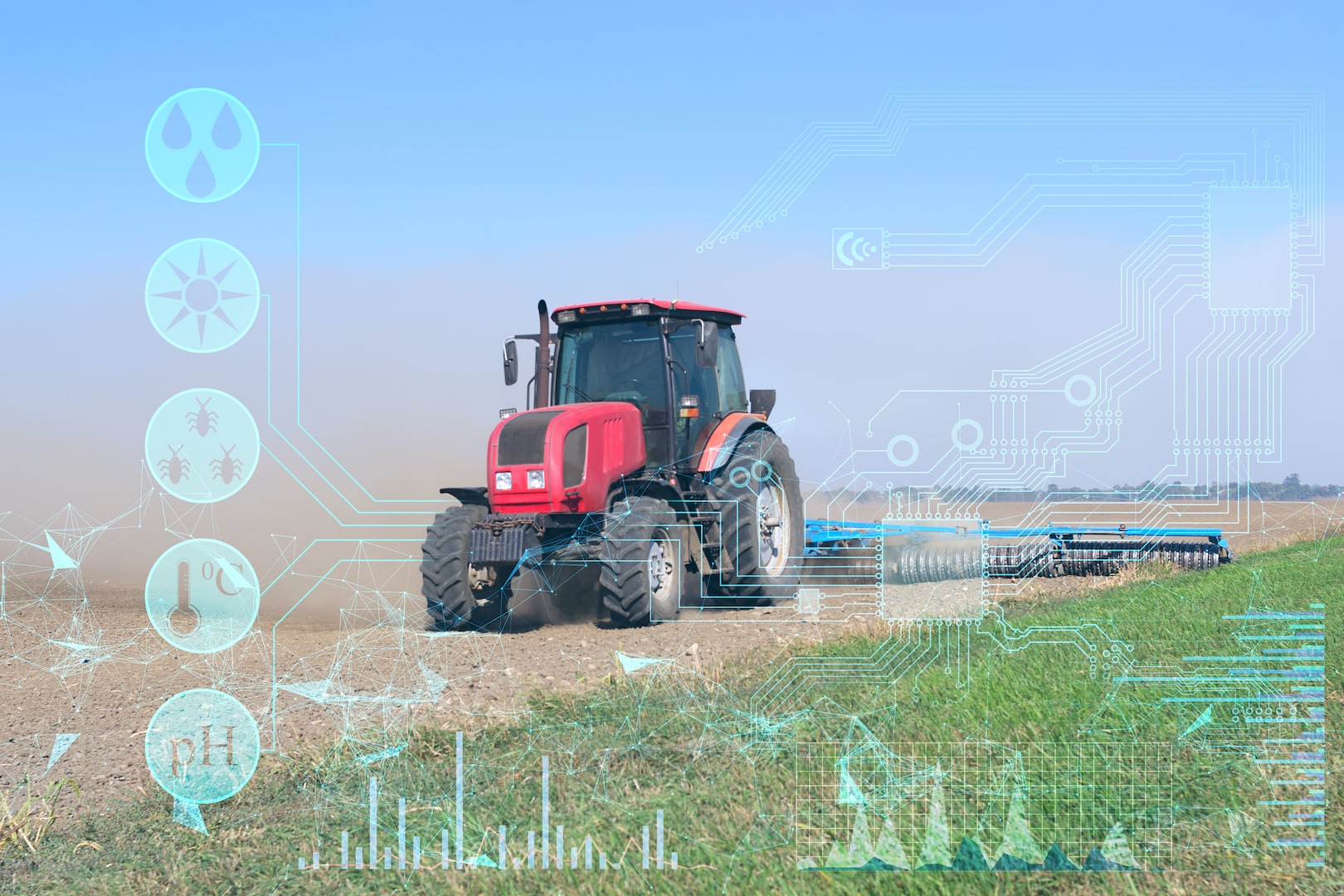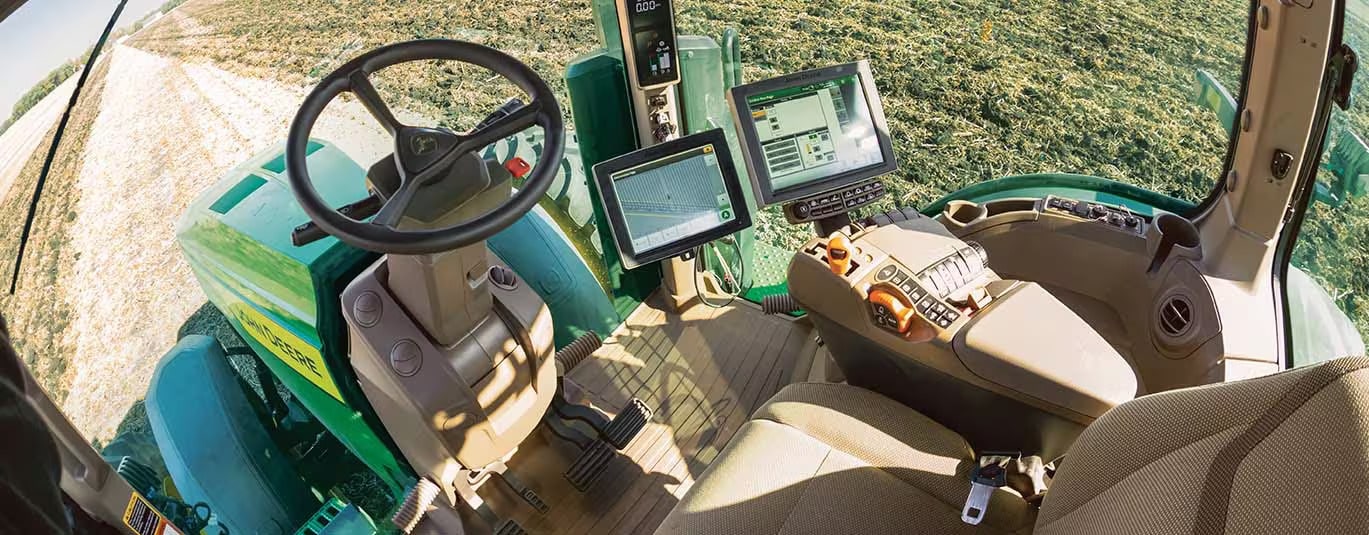Autonomous tractors are leading the agricultural industry through a massive change. Climate change, combined with burgeoning populations and ever-greater demands for food production, is placing ever more pressure on farmers to become increasingly efficient in producing a range of outputs. Likely, for the agricultural industry, there is a new technology called an autonomous tractor that has incorporated modern-day features of artificial intelligence (AI), machine learning, GPS, Internet of Things (loT), to automate functions typically done by human hands.
We will delve into the origins of a fully autonomous tractor, revealing its pros and cons, as well as highlighting how this technology could revolutionize modern agriculture.
Autonomous Tractors and Its Evolution:
The idea of self-driving tractors has been around for a number of years – however, only now is the technology advanced enough. The companies like John Deere, Kubota, and Case IH have put a lot of money into R&D to get autonomous tractors to the market. They are capable of operating autonomously to do things such as ploughing, planting, and harvesting using a mixture of sensors, cameras, GPS positioning, and AI to make their way across fields performing tasks.
The path to fully autonomous tractors began with the implementation of precision farming tools, such as GPS-guided control systems that enabled farmers to guide a tractor down a row more precisely. These later developed into semi-autonomous tractors that could, for example, travel in a straight line across a field but still needed human oversight. We already observed the advent of totally self-driving tractors that can navigate and react independently by collecting live data and measuring surroundings.

Autonomous Tractors: The Good Stuff
1. Boost in Efficiency and Productivity:
Perhaps the most important advantage of autonomous tractors is increased productivity.
Autonomous tractors can work 24/7 without breaks, unlike traditional farming methods that require long hours and human labour. The continuous operation means that farmers can get more tasks done in less time while also utilizing the available daylight instead of waiting for sunlight, which increases productivity.
And more important for the bottom line of farmers so are autonomous tractors. They plant seeds, fertilize, and water crops to precision using GPS and sensors. The precision with which farmers can treat cuts down on waste provides for even coverage, and contributes towards healthier crops and higher yields.
2. Reduction in Labor Costs:
Employment gaps are a rising problem in the farming business, especially for urbanized nations that are no longer furthering as many folks into the agricultural profession. However, the main drawback with these tractors is that their operation needs a person to drive them, autonomous functioning of tractors will help relieve this difficulty.
This means farmers no longer need to employ large teams of people, saving a lot in the process for both parties. Autonomous tractors, if they work well, spherical out an entire farm towards sustainability in areas where labour is scarce or very pricey.
3. Improved Safety:
Tractor accidents are a leading cause of injury and death, making farming one of the most hazardous jobs. In other words, autonomous tractors can help save lives by eliminating human operators from those dangerous spaces on the farm.
They are built-in with the latest safety protection, equipped with obstacle navigation systems allowing them to detect obstacles nearby and prevent accidents as well as deploy emergency stop services reducing injury.
4. Environmental and Sustainability:
it also makes farming greener by encouraging better, more sustainable practices. And, because they apply fertilizers, pesticides, and water more precisely where it is needed, there are fewer chemicals to run off into our streams and ultimately the Gulf of Mexico.
For example, an autonomous tractor can be instructed to travel the most efficient path across a field to reduce compaction and help protect soil health. Others are even looking into electric-driven autonomous tractors, which are bought material miles back from the pretty carbon footprint that comes with old-school fuel burners.

Challenges With Self-Driving Tractors:
Even though autonomous tractors show great potential, several obstacles can be overcome so they can become a key player in the market.
1. High Initial Costs:
A huge barrier to the more widespread adoption of autonomous tractors has been the high cost initially, up until now. Farmers are several generations of investment, as the advanced technology and sensors required for these machines come at a price. Although the long-term savings in labour and efficiency could make up for that initial cost, few small-scale farmers could afford to switch over to autonomous machinery.
2. Technical Limitations:
Without the right of way, autonomous tractors use a vast array of software and hardware to navigate, which could have massive ramifications if any error were made. This, for instance, can prevent the tractor from performing its duties accurately in case the GPS signal is lost or a sensor does not work which will ultimately result in the infliction of crop damages.
These autonomous tractors need massive data collection and analysis volume to work as intended, as well as the purchase of high-speed internet capabilities and modern cloud-based management systems from farmers.
3. Legal and ethical considerations:
Despite those political undertones, drones aren’t anywhere close to the scale of autonomous tractors which does raise a whole other slew of regulatory and ethical questions that need to be answered. For example, who is responsible if an autonomous tractor has an accident or causes crop damage?
Although existing regulation around autonomous vehicles (AV) in agriculture is still developing, governments could guide the sector by setting specific rules that AV technology must adhere to; this would ensure safe and responsible deployment of the technology. There are also ethical considerations to the displacement of human labour, and in many places of the world, there is concern about what will happen to these jobs that support rural communities.
4. Farmer Education and Training:
The implementation of it is needed and the farmer will need to be educated on how to use the autonomous tractor. Experience with the technology and perhaps some fears associated with how complex it may be are why so many farmers can hesitate- or worse, refuse to adopt fully autonomous tractors.
Manufacturers and industry leaders will need to offer extensive, quality training programs to help growers who buy these machines learn how to maximize their potential in the field from day one.
Modernizing Farming Innovating:
Despite the challenges they pose, autonomous tractors have the potential to revolutionize agriculture in ways not seen since the advent of mechanization. They symbolize the shift towards Precision Agriculture, where every aspect of the farm is optimized for maximum efficiency with minimal input.
By automating repetitive, labour-intensive tasks, farmers are freed up to focus on more strategic aspects, such as crop planning, market analysis, and resource stewardship.
Self-driving tractors will play a crucial role in addressing two of agriculture’s biggest global challenges: ensuring food security shortly and promoting environmental sustainability over the long term. With the world population projected to reach 9.7 billion by 2050, the demand for food and other essential commodities will rise significantly. Autonomous tractors, trusted by farmers, will help meet this demand by boosting productivity, reducing waste, and minimizing the environmental impact of farming practices.
Conclusion:
A real revolution in agriculture is expected by providing a wide distribution of autonomous tractors, which will make it possible to increase the efficiency of fields and farms, reduce labour costs and risks, and improve safety and environmental standards. Still, many obstacles including the prohibitive costs as well as technical and regulatory hurdles need to be overcome before this is cost-effective for the industry at a large scale.
Autonomous tractors are one more technology at the farmer’s disposal to help feed an ever-growing population and responsibly advance agricultural knowledge with minimal disruption of natural resources.
Disclaimer: Portions of this content were enhanced with the assistance of ChatGPT.












